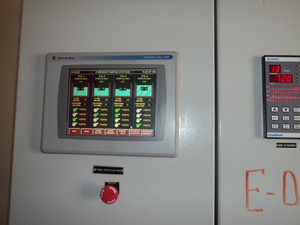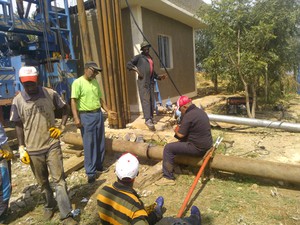The basics of operation and maintenance
Operation and maintenance of a water supply system refers to all the activities needed to run the system continuously to provide the necessary service. The two words are very frequently used together and the abbreviation ‘O&M’ is widely used. The overall aim of operation and maintenance is to ensure an efficient, effective and sustainable system (Castro et al., 2009). ‘Efficient’ means being able to accomplish something with the least waste of time, effort and resources; ‘effective’ means being successful in producing the intended result; and ‘sustainable’ means able to be maintained at the best level over time – in this case, the supply of water.
Operation
Operation refers to the routine activities and procedures that are implemented to ensure that the water supply system is working efficiently. The activities that contribute to the operation of a water utility are undertaken by technicians and engineers who have responsibility for controlling the functions of the system (Figure 6.3).

Figure 6.3 Control panel in a water treatment plant.
The components of the system that they look after, such as the treatment plants, process units and all the equipment and facilities (for example, offices and laboratories) are called the assets. For each asset there will be operating guidelines to follow. For instance, a water pump should only be operated for a limited number of hours per day and this must not be exceeded, otherwise it will be exposed to overheating and eventually to failure. The pump should also be run long enough to fill the service reservoir (which you learned about in Study Session 1). If not, there will not be enough water for distribution to customers.
What are service reservoirs?
They are reservoirs of water that serve to balance the fluctuating demands of users. They also serve as a back-up supply in case there is a breakdown at the water treatment plant that cuts the production of clean water.
Maintenance
Maintenance (Figure 6.4) refers to planned technical activities or activities carried out in response to a breakdown, to ensure that assets are functioning effectively, and requires skills, tools and spare parts (Carter, 2009). There are two types of maintenance:
- Corrective or breakdown maintenance: this is carried out when components fail and stop working. Breakdown is common in many utilities in Ethiopia and occurs as a result of poor preventive maintenance (explained next).
- Preventive maintenance: this is a regular, planned activity that takes place so that breakdowns are avoided. Examples of preventive maintenance would include servicing of equipment, inspecting equipment for wear and tear and replacing as necessary, cleaning and greasing moving parts of equipment, and replacing items that have a limited lifespan. Preventive maintenance is important because it ensures that the asset fulfils its service life. It also prevents crises occurring and costly repairs (in terms of time and money) being needed.
If you consider the example of the pump mentioned in Section 6.2.1, regularly checking the electrical parts, the components of the switch/operating board and inspection of power lines are tasks that can be regarded as preventive maintenance. If the pump fails due to operational problems or lack of preventive maintenance, it will have to be repaired or replaced – an example of breakdown maintenance.

Figure 6.4 Technicians undertaking maintenance activities on a water treatment unit.
Preventive maintenance ensures that the different components of the water supply system perform correctly over their service life (their expected lifetime). This in turn avoids the occurrence of a major fault or breakdown in the water supply system that calls for corrective maintenance that is many times more expensive. In some cases, the problem may require full replacement of a costly item of equipment, which also takes a significant amount of time to achieve. As a result, the service level of the water supply system will reduce or even be interrupted over the period of maintenance, causing significant inconvenience to users and reducing the income of the water utility.
Utilities should always ensure that an adequate level of preventive maintenance is in place for all of their assets in the water supply system. This requires that adequately skilled persons are employed as operators or maintenance crew, and that they are provided with the proper tools. A strict and regular schedule of work is also required to ensure that preventive maintenance is carried out at the appropriate time. The next section considers strategies and plans for maintenance.